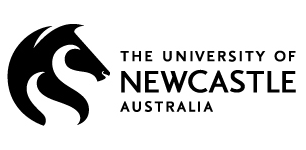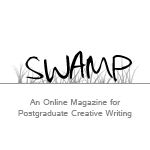The Garden
Mike Brown (Deakin University, Australia)
On October 11, 2012, the Victorian Civil and Appeals Tribunal (VCAT) handed down its ruling in regard to the proposed McDonald’s outlet in Tecoma, a small township in the Dandenong Ranges. The proposal had attracted a record number of objections to the Shire of Yarra Ranges council. Objections cited a range of issues such as the proposed 24-hour opening times of the outlet, traffic concerns, bushfire safety, litter, proximity to a primary school and the destruction of the historic Hazelvale dairy buildings, which included a mural by Indigenous artists Kumantjara Brown and Max Mansell. These concerns had led the council to reject the proposal unanimously in October 2011. VCAT ruled that the decision of the council a year earlier be set aside, allowing the proposed development to go ahead. In response, locals planted a community garden on adjacent land owned by the developer, Caulfield paediatrician Joel Freeman, on October 14, 2012.
It’s only been about four years, but it’s already becoming tangled in our minds, a time of sharp-edged intensity, bright images, snatches of chants and song, the smell of morning soil and eucalypt. As we stream down the winding hill roads to the long-neglected roadside plot (terra nullius we call it), there is a mounting euphoria in the air. The light is clear in the rising spring heat. Mistless, deep green hills cut the sky at our backs. A solitary sign, hand painted in red, already stands on the plot. It reads simply ’NO!’ Or maybe that sign has been removed by the time we get here; it’s difficult to remember now.
Our homemade placards (Respect Democracy, not Dollars; Sack VCAT; No Means No; Mac Off!) are first to be planted, along the roadside to the toots of support from passing cars. This sound will become a constant over the upcoming months. There are a couple of jeers too, but no real aggression. We surprise ourselves, stepping over the line, trespassing against the developer, who will appear, stony, to survey our work. He’s a paediatrician, of all things. Surely a paediatrician would know better with a kindergarten and primary school just over the road?
We’re not exactly sure whose idea it was to plant the garden in the unkempt little plot beside the old Hazelvale dairy. It just seemed to knit together during our online discussions in the fraught days after the VCAT decision. A year ago, when the council voted down the development, unanimously to crowded cheers, we thought we’d won. All was quiet for a while, but then, just a few days before Christmas, they appealed the decision. Now VCAT said the vote should be ‘set aside’. The old dairy was going down and the outlet was going in, an inevitability of the modern world. Everywhere else had outlets, so what made us think we were so special?
We wondered why we bothered electing councillors in the first place. We decided not to be set aside. We fumed. After we signed and shared the petition, the call went out to go down to the development site and occupy it.
The Change.org petition eventually reached over 100,000 signatures. Several Tecoma delegates flew to McDonald’s Chicago headquarters, meaning to hand deliver it to CEO Don Thompson in September 2013. Eventually, the petition was accepted by security guards after Mr Thompson refused to meet the delegates in person.
The international Occupy movement had peaked and fallen not long before; perhaps that’s where we got the idea. Many of us are keen gardeners and permaculture principles have a lot of adherents in the hills. We joined the Facebook groups. We clicked ‘Attending’ on the Event page.
These Facebooks posts and groups would later be scrutinised and used as evidence in Supreme Court proceedings against eight local residents. Undisclosed (rumoured to be extremely high) damages were sought against them for obstructing the development. The ‘Tecoma 8’ eventually had all charges and costs dropped after pro bono representation from Julian Burnside QC among others.
We fended off the inevitable trolls. Quashing their vitriol and intimidation on the event page became a full-time occupation. We didn’t know how far they would go. We had apprehensions of conflict and we wondered whether to bring the kids. The mood at the site, the physical site, is very different. The unpleasantness haunting the social media pages is completely absent, as we recognise friends, neighbours, local musicians, legal professionals, teachers, tradespeople and small business owners. It’s more like a mixture of working bee and carnival than a political demonstration.
We get to work. We have this feeling, like we’re bigger, a breathing, working thing, filling the plot. We forgot the sunscreen. Newspaper is spread and dampened on the clayish hills soil, over the thin grass. Layers of compost and mulch follow before the plants can begin to go in. We look up, straightening and stretching bare backs to see that even more of us have come, cheering as the local garden centre brings a trailer full of donated mulch. We breathe soil and dust as we shovel in the mulch, untwisting roots, patting down strawberries and watering. We decorate the garden beds. Some of us will later take our garden ornaments back home to our own gardens because the kids are worried they’ll be vandalised overnight. These ornaments will survive. There aren’t many gnomes yet.
Gnomes (‘gNOmaccas in the hills’) bearing tiny protest signs later became a symbol of the community movement, appearing in shop fronts all around Belgrave and Upwey, as well as in other locations around the hills. When opponents of the movement started smashing the gnomes at night, campaigners began photographing the gnomes at far-flung locations around the hills and then removing them, causing the vandals to waste time and petrol searching for them. On May 4, 2014, the first annual ‘Gnomeageddon’ gathering took place at Tecoma Primary School, setting a new Australian record for the largest number of people dressed as gnomes.
We make curving paths between the beds, a shape growing onto the rectangular blank canvas of the plot, faster than any of us could have imagined. It’s as if the garden has always been here under the patchy grass, waiting for us to excavate it, although happily there’s not that much actual digging involved. There’s a tree in the corner in which the kids are climbing. People keep arriving: many on foot, some by car; others filing up from the train station downhill.
There’s been a bit of disagreement about what we should wear, knowing the cameras would be here. Some of us were worried about looking like a bunch of stereotypical hills hippies; others argued we’d probably be painted as hippies anyway, so why worry? And besides, what’s wrong with looking like hippies? In the end, we agree to wear what we want: gumboots, overalls, one fellow actually gardening away in a two-piece black suit. We explain ourselves to the Channel 9 reporter, her heels in the dirt. It’s about democracy, about responsible development, about protection of fragile ecosystems, about advertising junk food to children, about being able to get out if there’s a bushfire without extra traffic in the way. It’s about all of it, all of the above; about something different for each of us but it’s still somehow the same thing. We’re not sure if people from off the hill will get it. We sing for the camera anyway.
The local police officer tells the press that we are good local people, but sooner or later we’ll have to move on. There is a minimal police presence at the site today and police make no move to hinder us. The hurricane fence will not go up for a few days yet, but there will be a small gap to squeeze through. We will entangle and entwine this fence with our signs, making it part of our garden.
The garden will become a focal point in our small township, which has never really had any public space to speak of. There will be people there at any time of day or night, greeting neighbours walking to work and home again. We will be sure of seeing friends there. People will sit on logs and talk over tea, as if there could be nothing more natural, or inspect the evolving garden beds and decorations. It will be like an ongoing party, without amplified music. There will be a harp player, but we reckon she might have come later, when the black hoardings around the old dairy were up, to serenade the nonplussed private security guards with resonant unfurling notes.
Darkness comes, still mercifully free of the greasy outlet light. The crowd thins a little with the fading of the light, but many remain. The air stills smells of eucalypt as we sit in a wide circle, mulch piled around us, breathing in the early twilight together before the leaders emerge, talking with neighbours we’ve only ever known as faces on the train or in the cafes. Local eateries donate food. There is a guitar and a drum circle, complementing the echoing kookaburra laughter from the darkening hills behind us. It’s a rare hills event that isn’t accompanied by guitar and djembe.
Is the garden an affirmation of our community, or is community created through the actions taken today? It’s true that we’re not supported by everyone in Tecoma; some of the local traders are in favour of the development, believing it will revitalise the moribund shopping strip, bring employment to the young and teach the teenagers the value of hard work. Some bitter, enduring enmities as well as long-term friendships will be born out of today’s deeds and both will take root and grow over the coming months. For now, we talk about the days to come, about defence of the garden.
Although we are up against a powerful opponent, a fait accompli, it doesn’t seem to matter as we feel a real sense of possibility, the chance of an entwined collective freedom not often found in the hollowed-out, atomised and spiteful social landscape of our times. We will never forget this feeling. We discuss wild and fanciful schemes to thwart our opponent. We could toss birdseed onto the roof of the outlet and let roving flocks of cockatoos tear the place apart for us. We consider printing flyers to hand out to tourists advising them to steer clear of the place and to try other local eateries. We talk about getting some of the many local bands and musicians to put together a benefit album. We’ll open a gallery filled with artwork protesting the development. A surprising number of these plans will actually come to pass.
A pop-up art gallery named Fatspace operated for six months in part of the building adjacent to the community garden site, opening on June 27, 2013. The gallery featured work in various media from local artists. The first night of the inaugural exhibition ‘Junk Food: Fast, Fried and Fatal’ was addressed by Kerin O’Dea, Professor of Nutrition and Population Health at the University of South Australia. Comedian Rod Quantock was Master of Ceremonies. Other exhibitions concerning the development and protest movement followed.
*
There is a lot ahead of us. Some of us will camp out under the garden’s sky to defend it. Others will spend the stark hills winter sitting on the dairy’s cold metal roof, warmed only by well-wishers, staying out of reach of the security guards.
At around 10 p.m. on July 3, 2013, a local campaigner was celebrating her 50th birthday on the roof of the Hazelvale Dairy building. She was hospitalised with injuries to her fingers after allegedly being pulled from the building by private security guards. According to witnesses, she had leaned over to offer a slice of her birthday cake to the guards. Initial police reports that she had fallen were contradicted by audio recording of the incident released by campaigners. Protesters also reported that the private security guards had previously made multiple threats to break their fingers.
The campaign will become more organised and media-savvy as it progresses. There will be benefit gigs and CDs, marches thousands strong, streaming along the narrow path beside the Burwood Highway (Highway in name only, it’s two lanes at this point) from Belgrave to Tecoma; there will be bumper stickers and distinctive red T-shirts ‘We Voted No…’seen everywhere around town and beyond. Flash mobs will appear at other outlets and on the trams of Melbourne, booming out modified renditions of ‘Do You Hear the People Sing?’ from Les Misérables and spreading onto YouTube and social media. We’ll be called a ‘rent-a-mob’ but the cheques will never arrive. We will also face escalating violence and intimidation from supporters of the development.
On the night of October 27, 2012, an unknown number of arsonists entered the unattended garden, uprooting plants, smashing garden ornaments and burning signs, garden furniture and a pavilion. This attack was praised by supporters of the development on Facebook. Locals involved in the campaign experienced menacing phone calls and severe online harassment, including the leaking of personal details, death threats and bomb threats.
The atmosphere at the site will become very different in later months when the demolition looms and we will face a very heavy security and police presence (salty Public Order Response Team officers, not just our local police any more), as well as CCTV cameras and legal notices pinned up around the perimeter. The few hundred square meters around the development site will begin to look more like a high-security prison than a small town shopping strip. The black hoardings will become our barricade, festooned with bright words. The buildings will be topped by vigilant rows of gnomes. Unknown men will photograph protestors with their phones, presumably in order to identify us in court proceedings, even (according to rumour) trying to snap number plates of passing cars that sound the horn in support.
As the conflict intensifies, we will organise rostered picket lines and union support. The unionised workers will walk off the job after a couple of days, citing safety concerns and uneasiness about crossing a community picket line (we have a word for those who do that, but we’re divided on whether to use that word). The company will have to look further and further afield for workers willing to do so. We will be shoved aside with increasing roughness as the financial toll of the slow-paced development and constant security begin to cause growing desperation. The build will even be held up for a time by a pair of grass-nesting native birds in the garden, masked lapwings who we will name Roy and Skye plover. Inevitably, the plovers will get their own Facebook page. We will give their lawyers the run-around on our shadowed twisting paths as they try to serve their papers on us. We will raise money for the defendants and fret about who’s next, rumours of papers being served spreading through our subterranean networks (we’ll be more wary of Facebook posts by then). Tonight, though, we relax in each other’s company. We survey our garden with smiles. We have started well.
The community garden remained in place for about a month between October and November 2012 before being cleared by police. The garden became a picket line, permanently attended for several months until the Hazelvale dairy buildings were demolished on August 8, 2013 under extremely heavy police guard. No attempt was made to save either the building materials or the unique mural artwork. After many delays, the McDonald’s Tecoma outlet opened on April 7, 2014. Catriona Noble stepped down as CEO of McDonald’s Australia on April 8, 2014, leaving the company altogether in 2015. Protests outside McDonald’s Tecoma continue on a regular basis. Locals report that patronage at the Tecoma outlet is very low.
We bloody told them.
Mike Brown is an English language teacher, linguist and emerging writer. Based in the Dandenong Ranges east of Melbourne, he is currently studying a Master of Arts in Writing and Literature at Deakin University.






